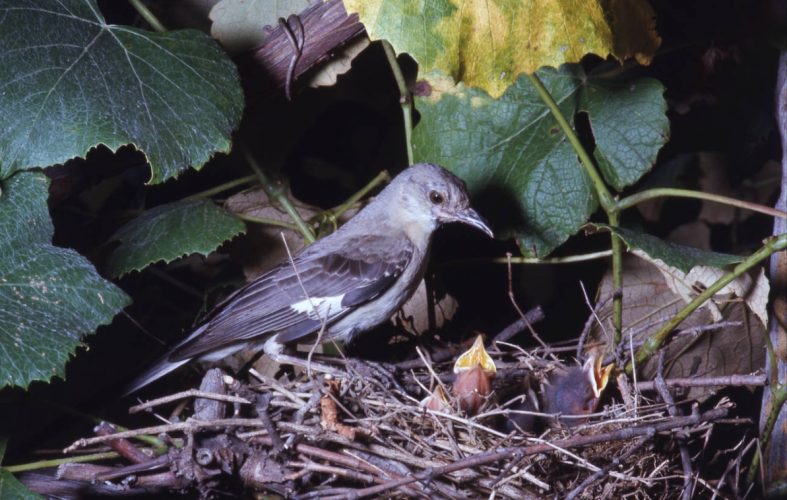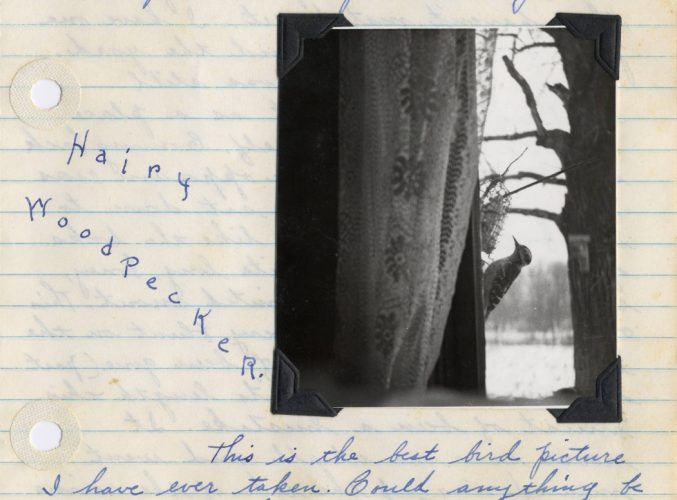Fine Feathered Friends

Spring in Ohio means many things, but one sure sign of the season is the sight and sound of Ohio’s bird populations. All around the state, a wide variety of species can be seen nesting, hatching, and generally celebrating the return of warmer weather, while still others can be seen briefly during a stopover in Ohio along their spring migration north.

Ohio Memory includes a remarkable item documenting a year’s worth of bird watching in the form of a “Pal Book” kept by Opal Ashcraft of Mercer County, who kept the book for her birding pal, Arlene Kunkel of Knox County, between December 1949 and December 1950. This black three-ring binder contains lined pages full of journal entries, colored pencil drawings, black-and-white snapshots, clippings, and even bird feathers and pressed flowers. Opal regularly reports on the birds she sees and hears around her rural home in Fort Recovery, as well as in her travels to the surrounding communities and countryside.
During the month of April, she mentions spotting and hearing a great number of species, including flickers, field sparrows, meadowlarks, herons, starlings, red-winged blackbirds, blue jays, juncos, nuthatches, ruby-crowned kinglets, Wilson’s snipes and many more. A recurring character throughout the book is “Pete,” a downy woodpecker who has made his home in a garden post in the yard and whose life and loves Opal chronicles through the seasons.

In addition to her avian observations, Opal details news about her family, farm, friends and community, the books she is reading, and general nature observations and sketches. A list of 118 birds seen in 1950 appears in the beginning of the book. Opal Ashcraft was born in Indiana on December 19, 1890. She and her husband, Harvey Leonard Ashcraft, who worked as a barber, lived on a farm in Fort Recovery where they raised two sons, Garth and Duane.
Interested in learning more about what birds you can see in your part of Ohio at any given time of year? Great resources are available online from the Ohio Ornithological Society, Audobon.org, and Bird Watcher’s Digest, among others. If you’d like to visit birding sites in person, some notable locations include Killdeer Plains Wildlife Area, the Edge of Appalachia Nature Preserve, and Magee Marsh, which hosts the “Biggest Week in American Birding” festival each spring.
Ohio Memory also has a number of images showing birds that can be found in Ohio, both migratory and native, like spring’s harbinger the American Robin. In addition to photographs and slides, you can find illustrations and other historical documents, as well as a variety of bird effigy pipes showing the observational traditions of the pre-contact American Indian populations who resided in this region long before European settlement. As we can see, birds have long been, and will continue to be, a remarkable part of life in our state.
Thanks to Lily Birkhimer, Digital Projects Coordinator at the Ohio History Connection, for this week’s post!



Leave a Reply
You must be logged in to post a comment.